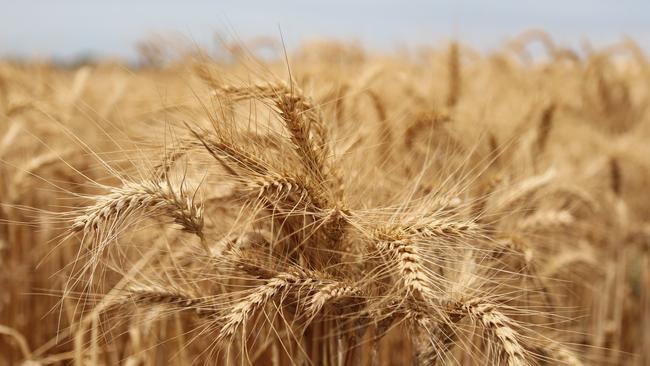Russia-Ukraine war threatens wheat supply, jolts prices
Russia’s invasion of Ukraine has jammed up Black Sea exports and risks a massive chunk of the world’s wheat supply. It has also sparked wild price swings in the market.

Russia’s invasion of Ukraine threatens a big portion of the world’s wheat supply and has sent prices on a dizzying ride to new highs as well as the sharpest weekly drop in years.
Wheat stockpiles were already running low and prices were the highest in years thanks to two years of poor growing weather when Russia’s attack jammed up Black Sea trading and endangered nearly a third of the world’s exports. The invasion prompted fears of food shortages in countries fed with imported grain and pushed prices to new highs.
Milling wheat in Paris and the most-traded US futures contract, for soft red winter wheat delivered to Chicago, notched record prices early in the week. Then they plunged. Chicago futures ended the week 8.5 per cent lower, the worst weekly performance since 2014 when wheat was coming down from a drought-induced spike. French markets, as well as on-the-spot trading in St. Louis and Kansas City, followed similar arcs.
Still, the benchmark US price, at $US11.07 a bushel, is 72 per cent higher than a year earlier and analysts expect the war will keep wheat high. Germany’s Commerzbank on Friday boosted its spring-quarter price forecasts by 19 per cent for Chicago futures and by about 14 per cent in Paris.
Rising wheat points to further inflation of food prices and another force blunting the post-pandemic economic recovery. Global food prices hit an all-time high in February, according to the United Nations’ Food and Agriculture Organisation. US food prices in February were up 7.9 per cent from a year earlier, according to the Bureau of Labor Statistics, taking a big bite out of Americans’ purchasing power.
Analysts and traders don’t know yet the extent to which global wheat supplies will be dented by the war. What remains of last year’s crop has been kept off market due to the closure of Ukrainian ports and shippers’ hesitancy to enter a war zone to fetch Russian wheat. Meanwhile, it is unclear if growers in the region will be able to harvest winter wheat, which was planted in autumn, or plant spring crops in the coming weeks.
“Russian ports are operating normally but no one is willing to pay extremely high insurance costs to book cargoes from there,” said Will Osnato, senior research analyst with Gro Intelligence, an agricultural data firm.
Since wheat is priced in dollars, exporters in Russia, where the currency has plunged about 40 per cent in 2022, could take cues from South American growers who in years past hedged their own currency devaluations by holding on to grains.
“This is the fog of war,” said Dave Whitcomb, head of research at Switzerland’s Peak Trading Research. “We just don’t know.” The uncertainty inspired a frenzy of speculation that exacerbated the price swings. Investors poured so much cash into the Teucrium Wheat Fund, which holds futures, that it ran out of shares to sell on Monday. The previous trading day, March 4, the exchange-traded fund issued about 16 million new shares, which was more than the 13 million or so that were outstanding before the invasion. US financial regulators granted the fund permission on Wednesday to create and sell additional shares.
The fund’s assets under management ballooned to nearly $US500m, up from $US86m before Russia’s attack, but dropped to about $US341m by the end of the week as wheat futures shed price.
“In six weeks they’ll start planting in Ukraine and Russia,” said Sal Gilbertie, president of Teucrium Trading, which manages the wheat fund. “If it’s disrupted that means a future reduction in supplies that the world is counting on.” The US Department of Agriculture on Wednesday lowered its expectations for Russian and Ukrainian wheat exports during the current marketing year, which began in June, by about 12 per cent. Some of the lost supply will be replaced by exports from Australia, where a record harvest is expected, and India, which has been ramping up shipments abroad amid a string of bumper crops, the Agriculture Department said in its monthly market forecast.
The Agriculture Department expects US farmers to plant slightly more wheat than last year, when the fewest acres were sown in more than a century. Lower yields are anticipated, due to continuing drought in the West and Northern Plains.
While American consumers can expect more sticker shock at the grocery store, the loss of Black Sea exports risks leaving some countries that rely on imports unable to meet their grain needs, analysts and traders say.
Egypt, the world’s largest wheat importer, recently cancelled a tender after receiving a limited number of pricey offers. Turkey reduced an order size. Tanzania recently said that its wheat import bill jumped 50 per cent for the 12 months through January, before the Russian attack roiled the market.
“The world’s poorest are going to suffer from this war,” said Mr Gilbertie. “It’s a crime against humanity.”
The Wall Street Journal



To join the conversation, please log in. Don't have an account? Register
Join the conversation, you are commenting as Logout